Red and near-infrared light therapy can boost your natural testosterone production by activating your Leydig cells – the specialized cells that produce testosterone in your testicles. The light wavelengths (600-700nm and 760-940nm) penetrate your tissue and stimulate your cellular mitochondria, enhancing ATP production and energizing these hormone-producing cells. Scientific studies have shown impressive results, with one 2016 study reporting a 71% increase in testosterone levels after just two weeks of treatment. This natural, non-invasive approach works by optimizing your body's own testosterone-producing mechanisms. The cellular science behind this powerful therapy reveals even more fascinating benefits for your hormonal health.
Understanding Red Light's Cellular Impact
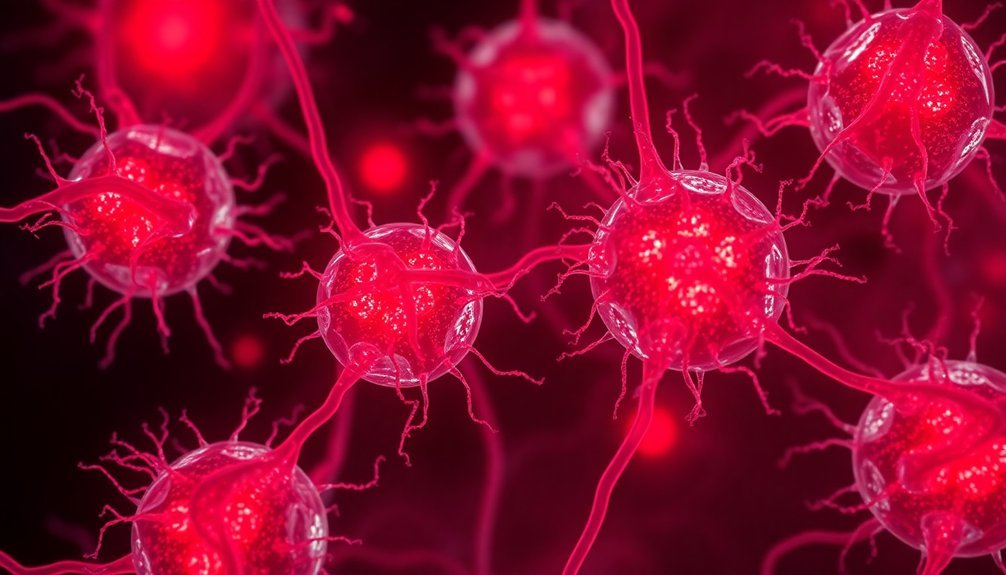
Delving into red light's cellular mechanisms reveals a fascinating cascade of biological processes. When red and near-infrared light penetrates your tissue, it triggers a series of reactions within your cells' mitochondria – the powerhouses responsible for energy production. Daily ATP turnover equals approximately your total body weight in continuous energy recycling.
The light dissociates nitric oxide from cytochrome C oxidase, enhancing the electron transport chain's efficiency and boosting ATP production.
Your cells' response to red light therapy intensifies when they're under stress. The photons excite electrons in the transport chain, improving cellular respiration and metabolic function. This process, known as photobiomodulation, activates photosensitive ion channels that regulate the flow of essential elements like sodium and calcium through your cells.
What's particularly notable is how red light modulates reactive oxygen species (ROS) levels. While excessive ROS can damage cells, moderate levels activated by red light therapy can beneficially influence transcription factors like NF-κB.
This balancing act helps reduce inflammation while promoting cellular repair mechanisms. The non-ablative, non-thermal nature of LED red light makes it a safe method for enhancing these natural cellular processes, ultimately supporting your body's internal repair systems.
Leydig Cells and Testosterone Production
Leydig cells step up to play a crucial role in your body's testosterone production through a complex series of molecular events. These specialized cells mobilize cholesterol from lipid droplets and transport it into mitochondria through a sophisticated protein complex called the transduceosome.
Once inside your mitochondria, cholesterol undergoes a critical transformation. The CYP11A1 enzyme converts it to pregnenolone at the inner mitochondrial membrane. Your body then uses various enzymes in both mitochondria and smooth endoplasmic reticulum to convert pregnenolone into testosterone.
You'll find that luteinizing hormone (LH) acts as the primary regulator of this process. When LH binds to receptors on your Leydig cells, it triggers cAMP production, which stimulates cholesterol movement and testosterone synthesis through the protein kinase A pathway. Starting around age 30, males experience a natural decline in testosterone as Leydig cells become less responsive to LH stimulation.
It's worth noting that you have two distinct types of Leydig cells. Fetal Leydig cells work with Sertoli cells to produce testosterone during development, while adult Leydig cells, which develop from stem cells, can independently synthesize testosterone.
These adult cells emerge from progenitors like vascular smooth muscle cells and pericytes, expressing nestin and showing neuroendocrine characteristics.
Light Wavelengths That Matter

Red light's therapeutic wavelengths fall into two key ranges that can boost your testosterone production: 600-700 nanometers (red light) and 760-940 nanometers (near-infrared light). These specific wavelengths penetrate your tissues effectively, stimulating cellular energy production and releasing nitric oxide, which supports testosterone synthesis in your Leydig cells. Since red light therapy is generally safe when used properly, you can confidently explore its potential benefits for hormone optimization.
| Wavelength Range | Penetration | Benefits |
|---|---|---|
| 600-670nm | Surface tissue | Enhances cellular energy, stimulates Leydig cells |
| 670-700nm | Medium depth | Increases serum testosterone, improves blood flow |
| 760-850nm | Deep tissue | Boosts ATP production, supports hormone synthesis |
| 850-940nm | Deepest reach | Promotes cellular repair, enhances overall function |
Research shows that wavelengths in the mid-600s and mid-800s nanometer ranges are particularly effective for testosterone enhancement. A 670nm diode laser has demonstrated significant results in increasing testosterone levels without adverse effects. You'll get the best results by combining both red and near-infrared wavelengths, as they work synergistically to promote hormone production at different tissue depths. When choosing a red light therapy device, verify it delivers these specific wavelengths for maximum testosterone support.
Mitochondrial Energy and Hormone Creation
Understanding mitochondrial function is essential to grasping how your body produces testosterone and other hormones. Inside your cells' mitochondria, a critical transformation occurs where cholesterol converts into pregnenolone – the building block for all steroid hormones, including testosterone.
Your Leydig cells, located in the testes, are where most of this action takes place. These specialized cells contain mitochondria that serve as miniature hormone factories. The process begins when cholesterol enters the mitochondria through specialized transport proteins, particularly StAR, which controls the rate-limiting step of hormone production. ATP production through oxidative phosphorylation powers this entire hormone synthesis process.
You'll find that your hormone creation relies heavily on proper mitochondrial function. When your mitochondria aren't working ideally, you'll produce less testosterone and other essential hormones.
This process is regulated by several pathways, including JAK/STAT and MAPK signaling, which respond to hormones like leptin and cellular signals like calcium.
Your mitochondrial health directly impacts your hormone levels, creating a two-way relationship. When your mitochondria function well, they support robust hormone production. Conversely, impaired mitochondrial function can trigger a cascade of hormonal imbalances, affecting both testosterone and thyroid hormone levels.
Scientific Evidence Behind Light Therapy

Research shows that red light therapy in the 660nm wavelength range can boost testosterone production by activating specific photoreceptive proteins in your Leydig cells.
You'll find multiple clinical studies demonstrating how this targeted light exposure improves testosterone levels, sperm motility, and sexual satisfaction in men with low T.
While studies confirm red light's effectiveness, green light therapy hasn't shown significant results on its own, highlighting how the specific wavelength of light matters for hormone production.
Clinical Research Results
Clinical studies have turned up compelling evidence supporting light therapy's ability to boost testosterone levels naturally. A groundbreaking 2016 study at the University of Siena demonstrated that men receiving red light therapy experienced a significant increase in testosterone levels, jumping from 2.1 ng/ml to 3.6 ng/ml in just two weeks, while the control group showed no improvement.
The research has identified specific mechanisms behind these impressive results. You'll find that red and near-infrared wavelengths directly stimulate Leydig cells, enhancing ATP production and supporting natural testosterone synthesis. Through the activation of photoreceptive proteins in the testes, this therapy promotes healthy hormone production without unwanted side effects.
Here's what clinical research has revealed about red light therapy's benefits:
- Increases testosterone levels by 71% within two weeks of treatment
- Enhances sperm motility and overall reproductive function
- Stimulates FSH and LH hormones, vital for testosterone production
- Improves sexual satisfaction and drive through natural hormone optimization
You'll find these clinical results particularly significant because they demonstrate both the effectiveness and safety of red light therapy as a non-invasive testosterone enhancement method.
Wavelength Impact Studies
The science behind red light therapy's wavelength impact explores deeply into cellular mechanisms. Specific wavelengths of 660nm red light and 850nm near-infrared light have shown remarkable effects on testosterone production through their interaction with Leydig cells in your testes.
You'll find that these wavelengths penetrate your tissue effectively, targeting mitochondria within Leydig cells. When these light waves reach your cells, they stimulate photoreceptive proteins, triggering a cascade of biological responses. Unlike harmful blue light that can damage DNA, these specific red wavelengths safely enhance your body's natural testosterone production processes.
The key to understanding wavelength impact lies in how your Leydig cells respond to different light frequencies. When exposed to red and near-infrared wavelengths, these cells experience increased ATP production, enhanced mitochondrial function, and improved steroidogenesis. You're fundamentally providing your cells with the ideal energy they need to produce testosterone more efficiently.
Research demonstrates that combining both 660nm and 850nm wavelengths creates a synergistic effect, maximizing the therapeutic benefits for testosterone production while ensuring deep tissue penetration and cellular activation.
Optimizing Treatment Time and Duration
Medical experts have found that enhancing your red light therapy sessions requires careful attention to both timing and frequency. You'll need to think about the duration of each session, which typically ranges from 10 to 20 minutes, though some protocols extend to 30 minutes.
While research hasn't established a universal treatment time, studies show that consistent exposure can stimulate your Leydig cells and boost testosterone production.
For the best results, think about these key timing factors:
- Your daily sessions should last between 10-20 minutes to activate mitochondrial energy production in Leydig cells.
- You'll want to maintain regular exposure, either daily or on alternating days, for sustained testosterone increases.
- You can expect short-term benefits from each session through enhanced ATP production.
- You'll need to monitor your individual response, as effectiveness varies from person to person.
The good news is that red light therapy hasn't shown significant side effects when used for testosterone enhancement. However, you should know that while studies consistently demonstrate its potential to increase testosterone levels, scientists are still investigating the ideal dose-response relationship.
You'll benefit most from working with a healthcare provider to develop a personalized treatment schedule.
Benefits Beyond Testosterone Levels
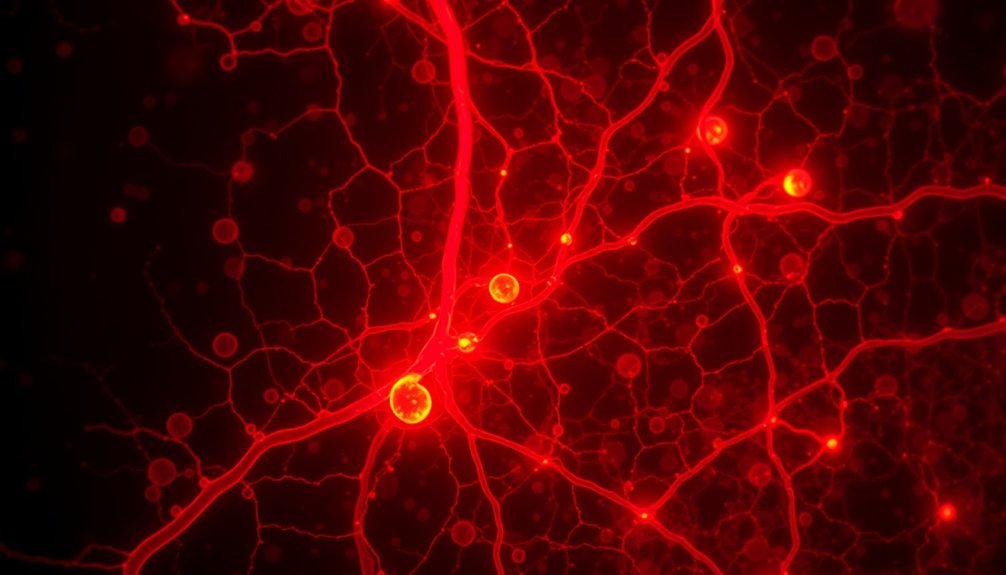
While you'll notice increased testosterone production through red light therapy, the benefits stretch far beyond hormonal improvements.
Your muscles recover faster and grow stronger due to enhanced cellular energy production, and you'll experience better sleep quality that supports overall physical restoration.
The therapy's effects on brain function can sharpen your focus and mental clarity, making it an exhaustive solution for both body and mind optimization.
Muscle Growth And Recovery
Building strong, resilient muscles requires more than just understanding testosterone's role in muscle development. You'll need a thorough approach that combines proper rest, nutrition, and recovery strategies to maximize your gains.
Red light therapy has emerged as a powerful tool that works alongside your body's natural processes to enhance muscle growth and speed up recovery.
Your muscles need specific conditions to repair and grow stronger after workouts. Here's what you need to focus on for best results:
- Rest adequately between sessions to allow for muscle regeneration and cell repair, as microscopic tears from weightlifting need time to heal.
- Consume 0.2-0.5 grams of protein per kilogram of body weight post-exercise, maintaining a 3:1 or 4:1 carbohydrate to protein ratio.
- Incorporate red light therapy sessions to increase blood flow, reduce inflammation, and enhance mitochondrial function in muscle cells.
- Follow the three-phase recovery process: rest, refuel, and regenerate.
Enhanced Sleep Quality
Your body's restorative processes don't stop at muscle recovery – quality sleep plays a powerful role in enhancing your overall health and testosterone levels. Poor sleep can trigger a problematic cycle: low testosterone leads to fragmented sleep, while sleep deprivation causes testosterone levels to drop by 10-15% in just one week.
| Sleep Factor | Impact on Health | Effect on Testosterone |
|---|---|---|
| Duration | Immune system support & stem cell production | Levels increase during sleep |
| Quality | Better vaccine response & illness resistance | Less fragmentation & awakening |
| Consistency | Reduced inflammation markers | Stable hormone production |
When you're struggling with sleep issues, you'll likely notice decreased energy, compromised immune function, and hormonal imbalances. Getting consistent, quality sleep helps maintain proper testosterone production and strengthens your immune system's ability to fight illness. If you're experiencing ongoing sleep problems, addressing potential testosterone deficiency through TRT might help break the cycle. Lifestyle modifications like resistance training, stress management, and improved sleep hygiene can also support better sleep quality and hormone regulation. Remember that cortisol, your stress hormone, can interfere with both sleep quality and testosterone production, making stress management vital for achieving the best results.
Cognitive Function Improvements
The cognitive benefits of red light therapy extend far beyond its effects on testosterone levels. Research shows significant improvements in memory, mental clarity, and overall brain function when you expose yourself to red light treatments.
The therapy works by increasing blood flow and oxygenation to your brain while enhancing mitochondrial function and cellular energy production.
Here's what red light therapy can do for your cognitive function:
- Boosts memory performance and executive function, helping you maintain sharper recall and better decision-making abilities
- Increases blood flow to your brain, delivering essential nutrients and oxygen while promoting cellular repair
- Provides neuroprotective effects by reducing oxidative stress and inflammation, potentially slowing the progression of cognitive decline
- Enhances mental clarity and reduces brain fog, helping you stay focused and alert throughout the day
Your brain's cells become more resilient and energized through improved ATP production and reduced inflammation. If you're concerned about cognitive decline or want to optimize your brain function, red light therapy offers a science-backed approach to supporting your mental performance while protecting against age-related cognitive changes.
Safety Protocols and Guidelines
Safety stands paramount when undergoing testosterone therapy, particularly with undecanoate injections that require strict medical supervision. You'll need to stay in a healthcare setting for at least 30 minutes after each injection to monitor for potential breathing problems or allergic reactions.
| Safety Protocol | Required Action |
|---|---|
| Pre-Treatment | Disclose medical history, medications, and conditions |
| Monitoring | Regular blood pressure checks and testosterone level tests |
| Emergency Signs | Report chest pain, breathing difficulties, or dizziness immediately |
| Follow-up Care | Attend scheduled appointments for blood cell monitoring |
| Risk Management | Participate in monitoring programs and regular assessments |
Your healthcare provider will need to know about any pre-existing conditions, especially heart disease, sleep apnea, or high blood pressure. You'll undergo regular blood tests to monitor changes in red blood cell volume and testosterone levels. If you're taking other medications, inform your doctor to prevent adverse interactions. Long-term therapy requires continuous monitoring, and you should report any symptoms like rash, hives, or breathing difficulties right away. Remember, these injections must only be administered by healthcare professionals in appropriate settings with emergency response capabilities.
Natural Testosterone Enhancement Methods

While you're exploring the benefits of red light therapy for testosterone, you'll want to complement your treatment with proven lifestyle changes that naturally boost hormone levels.
You can maximize your results by incorporating testosterone-friendly habits like strength training, getting adequate sleep, and eating foods rich in protein, zinc, and vitamin D.
These natural methods work synergistically with light therapy to enhance your body's testosterone production, creating a thorough approach to hormone optimization.
Lifestyle Changes Drive Hormones
Several well-researched lifestyle modifications can naturally boost your testosterone levels without medical intervention. By focusing on nutrition, exercise, and daily habits, you'll create an ideal environment for hormone production.
Your body responds positively to these changes, especially when you combine multiple approaches consistently.
- Improve your diet by incorporating protein-rich foods like lean meats, fish, and eggs, while adding magnesium and zinc sources such as spinach, almonds, and oysters. Don't forget to include vitamin D-rich foods like salmon and consider drinking pomegranate juice to lower cortisol.
- Embrace resistance training with emphasis on large muscle groups and high-intensity interval training. These exercises stimulate testosterone production more effectively than steady-state cardio alone.
- Prioritize quality sleep by getting 7-8 hours nightly, as this is when your body produces significant amounts of testosterone. Wear loose-fitting underwear and maintain a cool sleeping environment.
- Eliminate harmful habits by reducing alcohol consumption, quitting smoking, and avoiding exposure to environmental toxins like BPA. Practice stress management through meditation or yoga to keep cortisol levels in check.
Light Therapy Boosts Production
Recent studies have revealed that bright light therapy offers a promising natural approach to boost testosterone levels. You'll see significant improvements in both hormonal balance and sexual satisfaction when you expose yourself to 10,000 lux light therapy for 30 minutes each morning.
Research shows that men who undergo light therapy experience a remarkable 50% increase in testosterone levels within just two weeks. You're mimicking natural sunlight patterns in a fundamental way, which have been proven to influence hormone production through the inhibition of the pineal gland.
| Aspect | Light Therapy Impact | Time Frame |
|---|---|---|
| Testosterone | 50% increase | 2 weeks |
| Sexual Satisfaction | Tripled scores | Study duration |
| Light Intensity | 10,000 lux | Daily |
| Exposure Time | 30 minutes | Morning |
| Natural Pattern | Peaks in October | Seasonal |
You'll find this non-pharmaceutical approach particularly effective when compared to traditional treatments. Italian researchers discovered that participants using light therapy showed dramatically improved sexual satisfaction scores compared to the control group. The therapy's success lies in its ability to simulate natural sunlight patterns, triggering hormonal processes that enhance testosterone production through the Leydig cells.
Combining Therapies for Maximum Results
The optimization of testosterone production often requires a multi-faceted approach. When you combine red light therapy with other treatments like autologous stem Leydig cell transplantation, you'll potentially achieve better results than using either therapy alone.
The synergistic effects of these combined treatments can address multiple aspects of testosterone deficiency while supporting your body's natural production mechanisms.
Here's what you can expect when combining therapies:
- Enhanced ATP production through red light therapy at 660 and 850 nanometers, directly energizing your Leydig cells' mitochondria
- Improved steroidogenesis from increased mitochondrial function, helping convert cholesterol to testosterone more efficiently
- Potential long-term benefits from SLC transplantation, which can restore testosterone production in deficit conditions
- Reduced oxidative stress through red light therapy, protecting your Leydig cells from damage
You'll need to maintain consistency with red light therapy sessions to sustain increased testosterone levels. While SLC transplantation is more invasive, it can complement the non-invasive nature of red light therapy.
Together, these treatments may offer a thorough solution for testosterone optimization, though more research is still needed to fully understand their combined effects.
Future Applications in Medicine
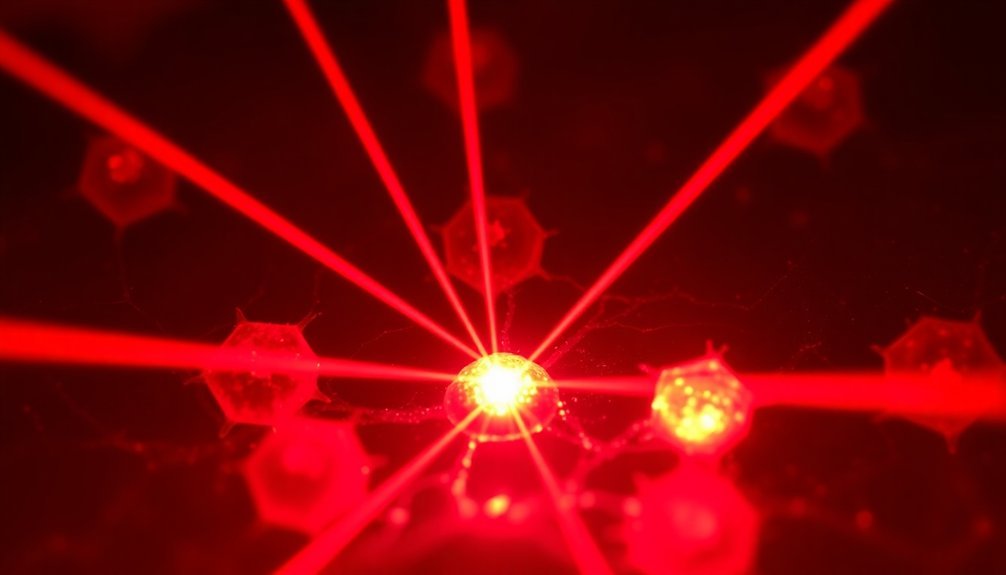
Medical breakthroughs in red light therapy point to revolutionary changes in how doctors will treat testosterone deficiency. You'll soon see this technology implemented in fertility clinics and hormone treatment centers as a non-invasive alternative to traditional testosterone supplementation.
| Application | Benefit |
|---|---|
| Fertility Treatment | Enhanced sperm motility and reduced abnormal production |
| Hormone Therapy | Natural testosterone increase up to 200% |
| Athletic Performance | Increased muscle mass and strength |
| Anti-Aging | Prevention of late-onset hypogonadism |
Research shows that visible red LEDs (600-700nm) can target Leydig cells directly, boosting ATP production and enhancing testosterone secretion. You'll find this particularly beneficial when combined with natural antioxidants, which help regulate hormone production through intracellular pathways.
The future of testosterone therapy looks promising, especially with developments in microencapsulated Leydig cells and targeted light delivery systems. You won't need to worry about the risks associated with traditional hormone replacement, as red light therapy offers a safer approach without the side effects of heat or UV exposure. Remember to avoid blue light and heat lamps during treatment to maximize effectiveness.
Frequently Asked Questions
Can Red Light Therapy Help With Erectile Dysfunction?
Yes, red light therapy can help your erectile dysfunction by improving blood flow, boosting testosterone production, and enhancing circulation in penile blood vessels. It's a non-invasive treatment that targets ED's root causes.
Will Red Light Therapy Affect Sperm Count or Fertility?
Yes, red light therapy can improve your sperm count and fertility. You'll likely see better sperm motility, higher sperm counts, and fewer abnormal cells. Research shows positive results after just one treatment session.
How Soon After Starting Therapy Can Testosterone Level Changes Be Noticed?
You'll notice initial testosterone changes within 3-6 weeks of starting therapy. The first benefits appear in sexual interest and quality of life, while most significant improvements stabilize between 6-12 months.
Does Clothing Interfere With Red Light Therapy's Effectiveness on Testosterone Production?
Yes, clothing will reduce your red light therapy's effectiveness. You'll get the best results by exposing bare skin, as fabrics block and absorb light. Even thin clothing can interfere with maximum light penetration.
Can Women Safely Use Red Light Therapy for Hormonal Balance?
Yes, you can safely use red light therapy for hormonal balance. It helps regulate your menstrual cycle, reduces PMS symptoms, and supports endocrine function. Just consult your healthcare provider before starting, especially if you're pregnant.
In Summary
You've now learned how red light therapy can boost your natural testosterone by stimulating Leydig cells and enhancing mitochondrial function. When you're ready to try this treatment, start with short sessions and gradually increase exposure time. Remember, it's most effective when combined with other natural testosterone-boosting methods like exercise and proper nutrition. Always follow safety guidelines and consult your healthcare provider before beginning any new therapy regimen.
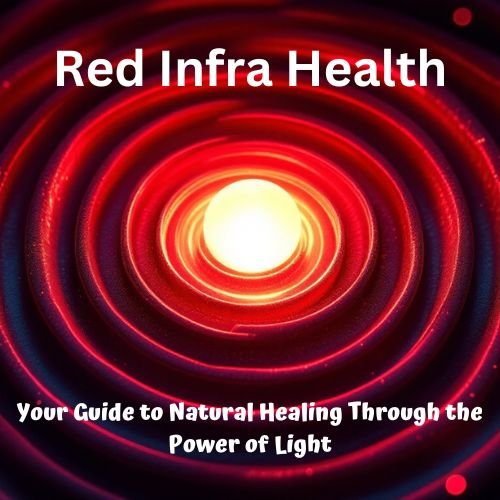
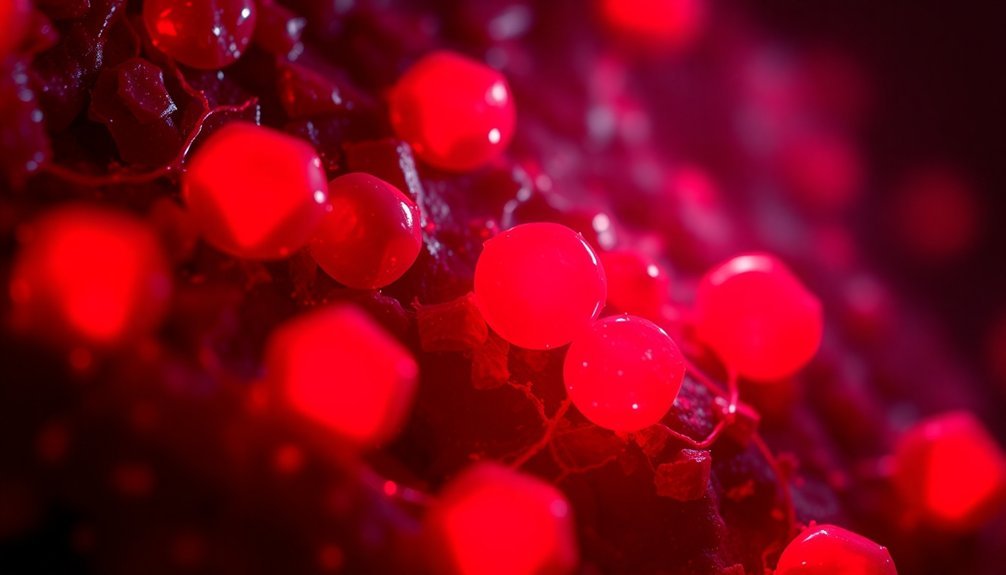


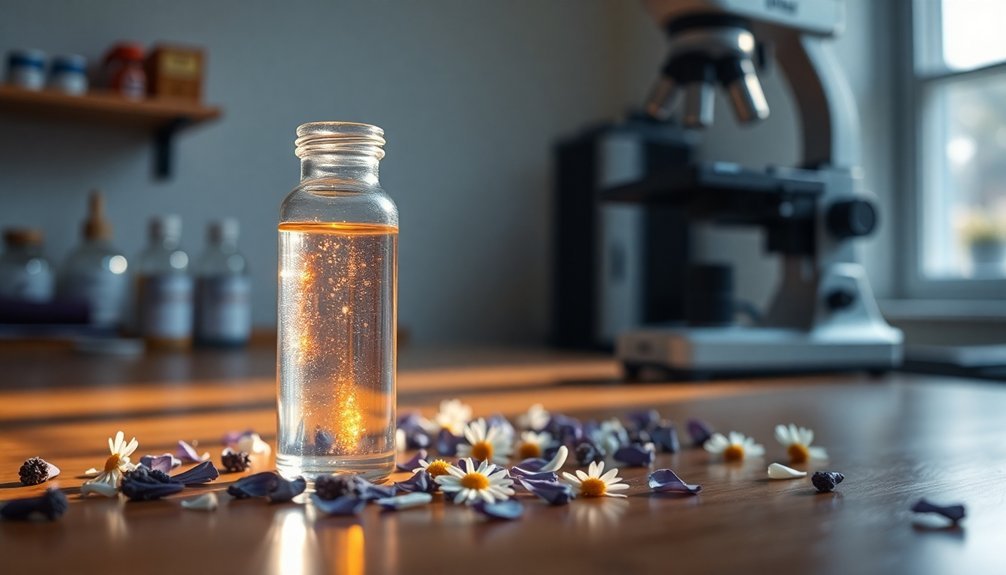
Leave a Reply